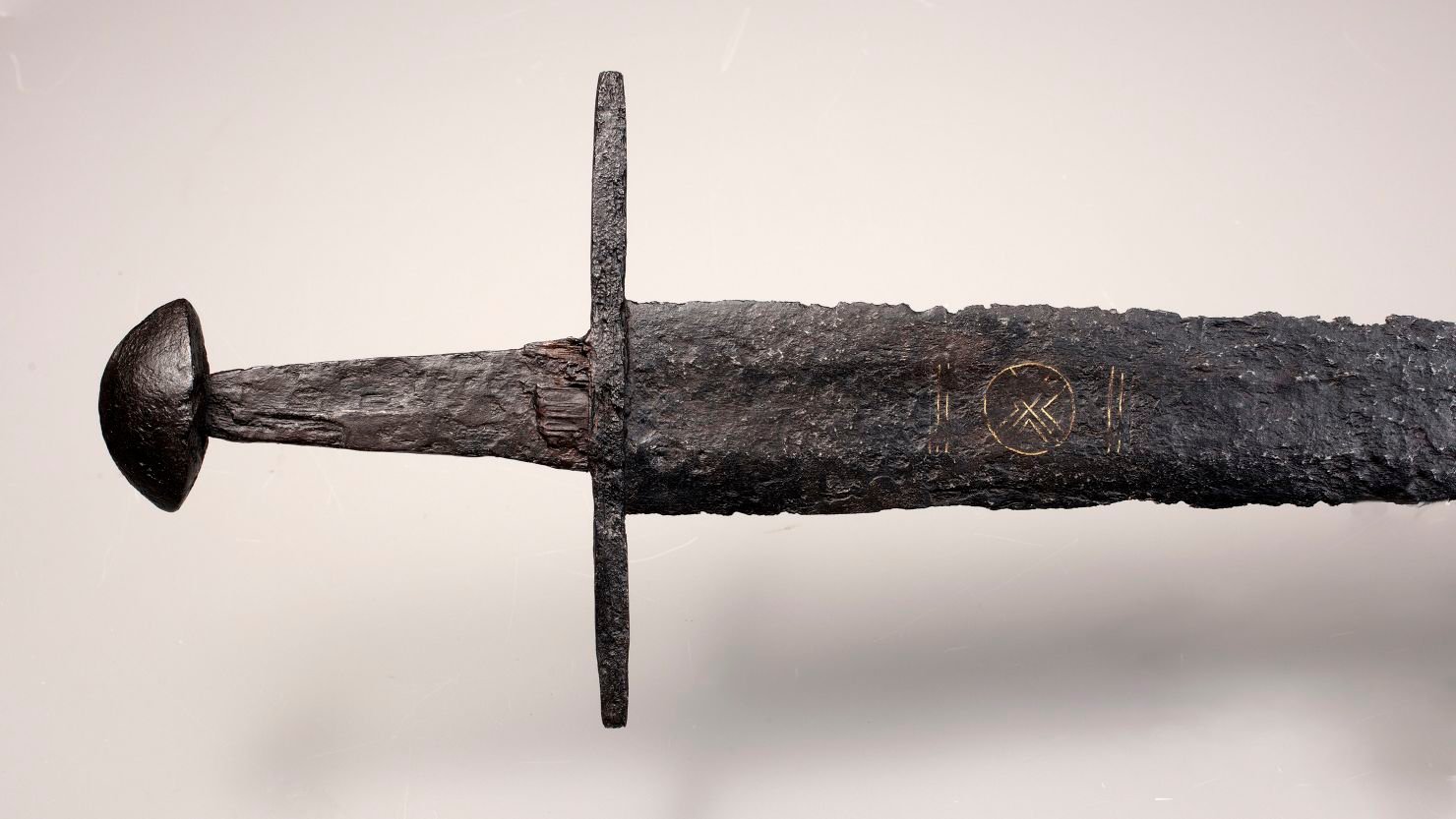The sword was found during routine maintenance at the Linschoten Estate on March 1, 2024, and has been donated to the Rijksmuseum van Oudheden (National Museum of Antiquities) in Leiden, according to a statement from the museum on Tuesday.
Dating from around 1050 to 1150 and measuring one meter (3.3 feet) in length, the sword is inlaid with gold-colored copper forming the shape of a cross and a spiritual symbol known as an endless knot, the museum added.

It features a long crossguard and a nut-shaped pommel, said the museum, which added that it was made from high-quality iron mined at Veluwe.
“The sword remains remarkably well-preserved after a thousand years. Only the organic components – such as the wooden grip and any leather wrappings – have succumbed to time,” reads the statement.
“The iron is barely corroded due to the oxygen-poor environment of the wet soil. Traces of the wooden hilt are still visible on the preserved sword,” it added.

It appears that the sword was deposited in the river on purpose, and there were no traces of a scabbard were found nearby.
“Medieval swords were deeply personal possessions: they were either buried with their owner or – alternatively – ritually deposited into water,” said the museum.
“In the latter case, they are often exceptionally well preserved,” it added.
At the time it was forged, the area would have been ruled by the Bishop of Utrecht, a nearby city, although he would have been in frequent conflict with the Counts of Holland and Flanders, who were becoming increasingly powerful.
“This era also saw a shift in military tactics and weaponry: vertical slashing from horseback gave way to horizontal thrusting between pieces of armour,” said the museum.
“This sword, which could be wielded with one hand, embodies that transitional phase – suited to both techniques.”














